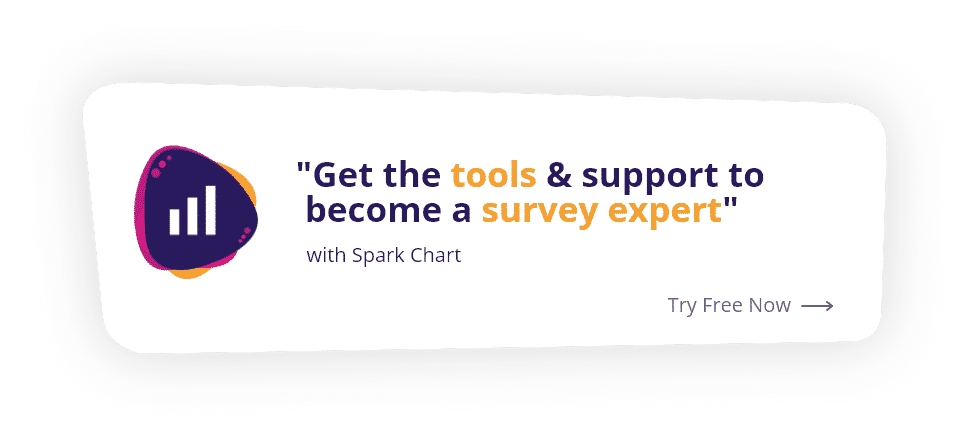

you should understand the issue of getting informed survey consent from your survey respondents. It may end up making the difference between getting data that’s usable or data you have to eliminate from your project. Considering survey consent is an important aspect of engaging survey recipients.
What is informed survey consent? When should you get it? When do you have to get it? How do you collect it?
We’ll answer those questions and more in this article.
For surveys, informed consent is your respondents’ explicit agreement to submitting their data via your survey.
Anybody who gathers someone’s personal information should include informed consent questions on surveys they publish.
This includes academic institutions, institutional researchers, employers, or any other organization. Personal information means information about someone’s personal identity, health, or financial history.
The potential survey participant needs to know all of the procedures, benefits and risks associated with taking part in the project. Once they understand the complete situation they are ‘informed’.
If they then agree to continue with their participation in the project, they have given you ‘informed consent’.
We recommend that your informed survey consent document has six parts:
Let’s look at each of these areas in detail.
This section should introduce the potential respondent to your project. It should include:
This section tells the potential respondent what expectations you have of them. This could include:
This section should paint a full picture of how the respondent might benefit from taking the survey. And it should also include the risks they are exposed to by participating. This could include details about:
People are generally becoming more concerned privacy matters. Your informed consent document should therefore include information about:
People will always have questions later. Make it easy for them to reach you! In this section, provide contact information such as your:
Inform the potential participant about how you will use the data you are collecting. Will the data be:
This will help the respondent to decide whether they would like to participate.
Now that you have informed your potential survey respondent about everything that might impact them, you need to get their consent.
There are two ways do that that. You can do it implicitly, or explicitly.
Implicit consent is when you tell participants that just by completing the project they have given their consent. Completion implies agreement. If they didn’t agree, they simply wouldn’t have filled out the survey.
While this removes a question or two from your survey it does leave a little wiggle room for doubt should any questions arise. The participant didn’t actively do something specific to indicate their consent. While unlikely to cause problems, it could.
Explicit consent is when you specifically agree to something.
You can use consent-specific questions that allow participants to indicate they understand what’s being asked of them and agree to it.
Having some extra questions on the survey is usually better than having a separate consent form for participants to sign. If you add more forms, you will reduce your response rate. And by including it, then the consent is submitted at the same time as the survey.
In web-based forms, radio buttons are a group of options that only allow one selection. (Fun fact: Radio buttons are named after vintage automotive radios that have several buttons for stations but allow only one button to be “pushed” at a time.)
For consent, we want either a Yes or No from users of our survey. Radio buttons here are a logical choice.
The consent question should be worded in a plain, understandable fashion. Here’s an example:
‘I understand the intent, risks, and benefits of this survey and consent to providing my information for the stated use.’
Options for answers should be Radio Buttons for Yes or No.
Answering Yes should allow the user to continue to the rest of the survey.
Answering No should redirect them out of the survey (but still provide a thank-you page for their time).
Go forth and survey!
Now that you know how to get informed consent from your respondents, you can go and create great surveys. Informed consent is about more than just meeting a legal requirement: It makes your respondents more comfortable, knowing that you care about their privacy.
Let us know your questions and we can help at Spark Chart.

Powerful survey software with 24 x 7 expert advice and support.
“We help organisations, leaders and business consultants use surveys to uncover hidden knowledge & ideas!“
Don’t wait. Start now!
We use cookies to enhance your experience. By continuing to browse the site, you are agreeing to our use of cookies. You can manage cookies via your browser settings.
We may request cookies to be set on your device. We use cookies to let us know when you visit our websites, how you interact with us, to enrich your user experience, and to customize your relationship with our website.
Click on the different category headings to find out more. You can also change some of your preferences. Note that blocking some types of cookies may impact your experience on our websites and the services we are able to offer.
Essential Website CookiesThese cookies are strictly necessary to provide you with services available through our website and to use some of its features.
Because these cookies are strictly necessary to deliver the website, refusing them will have impact how our site functions. You always can block or delete cookies by changing your browser settings and force blocking all cookies on this website. But this will always prompt you to accept/refuse cookies when revisiting our site.
We fully respect if you want to refuse cookies but to avoid asking you again and again kindly allow us to store a cookie for that. You are free to opt out any time or opt in for other cookies to get a better experience. If you refuse cookies we will remove all set cookies in our domain.
We provide you with a list of stored cookies on your computer in our domain so you can check what we stored. Due to security reasons we are not able to show or modify cookies from other domains. You can check these in your browser security settings.
Check to enable permanent hiding of message bar and refuse all cookies if you do not opt in. We need 2 cookies to store this setting. Otherwise you will be prompted again when opening a new browser window or new a tab.
Click to enable/disable essential site cookies. Google Analytics CookiesThese cookies collect information that is used either in aggregate form to help us understand how our website is being used or how effective our marketing campaigns are, or to help us customize our website and application for you in order to enhance your experience.
If you do not want that we track your visit to our site you can disable tracking in your browser here:
Click to enable/disable Google Analytics tracking. Other external servicesWe also use different external services like Google Webfonts, Google Maps, and external Video providers. Since these providers may collect personal data like your IP address we allow you to block them here. Please be aware that this might heavily reduce the functionality and appearance of our site. Changes will take effect once you reload the page.
Google Webfont Settings:
Click to enable/disable Google Webfonts.Google Map Settings:
Click to enable/disable Google Maps.Google reCaptcha Settings:
Click to enable/disable Google reCaptcha.Vimeo and Youtube video embeds:
Click to enable/disable video embeds. Other cookiesThe following cookies are also needed - You can choose if you want to allow them:
Click to enable/disable _ga - Google Analytics Cookie. Click to enable/disable _gid - Google Analytics Cookie. Click to enable/disable _gat_* - Google Analytics Cookie. Privacy PolicyYou can read about our cookies and privacy settings in detail on our Privacy Policy Page.